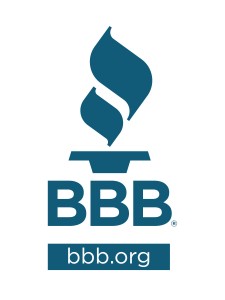 Do you remember running the 50-meter dash as a kid in gym class? The task was simple: run as fast as you can until you reach the end. Your direct sales business, however, requires a much different approach, one more similar to running the mile; you need endurance, stamina, and a view of the overall task in order to succeed. Growing your business should always be a super-objective you are striving to achieve to stay ahead of the competition, evolve with the industry, and know how to satisfy your customers’ needs. Read on for some suggestions to grow your business for the long haul.
Do you remember running the 50-meter dash as a kid in gym class? The task was simple: run as fast as you can until you reach the end. Your direct sales business, however, requires a much different approach, one more similar to running the mile; you need endurance, stamina, and a view of the overall task in order to succeed. Growing your business should always be a super-objective you are striving to achieve to stay ahead of the competition, evolve with the industry, and know how to satisfy your customers’ needs. Read on for some suggestions to grow your business for the long haul.
- Educate yourself on current trends. You should make it your business to always be aware of where the industry is headed; the last decade, for example, has found the direct selling industry rife with change. The focus has shifted from building face-to-face relationships exclusively to combining those efforts with building online relationships as well. In addition to this virtual internet takeover, the economy has also played a major role in how direct sellers operate their businesses. Did you know that an economic downturn can actually benefit the industry? Always do your research to stay on top of what is happening with the direct sales industry as a whole, not just your particular company.
- Evaluate your ideas and seek improvement. This is especially true if you have been working your business for a long time. You most likely have some tried and true methods of marketing, demonstrating products, and recruiting prospects for your downline. Make sure you periodically self-evaluate what you’re doing and continually be on the lookout to better your own ideas. Get feedback from your upline, your customers, and your network. The best way to grow your business is to be a perpetual student; never stop learning.
- Take calculated risks. Risk-taking is a necessary element to any business, but since you are ultimately responsible for the consequences, both good and bad, of those risks, really weigh the pros and cons before making the final decisions. When faced with a decision about your business, take into account not only the financial implications, but also those that may affect other aspects such as your reputation, adherence to your company’s policies, or your ability to provide top-quality customer service. While we certainly cannot look into a crystal ball, the key to risk-taking is to be educated enough to make an informed, well-thought out decision.
- Brand and market yourself. You are likely one of thousands of direct sellers representing your company. What sets you apart from other consultants? What benefits would a customer reap by choosing to work with you instead of the representative across town? Focus your efforts on becoming an expert in your field, and market yourself as someone who is passionate not just about the products themselves, but what they can do for others. If your company sells products that are environmentally-friendly, your prospects and customers should know why this is such an important issue for you. What is your connection? Why did you choose to do this as your way of earning a living? Decide what makes you unique and begin building yourself into a brand to differentiate yourself from others.
A successful direct sales business is within your reach; look at the big picture, continue developing your talents and skills, and make informed decisions about where to focus your professional efforts. What are some tips you have to add to our list? Please share them with us below!
 Free e-book “Business Owner’s Road Map to Success.” It has over 50 pages of techniques for everything a small business owner needs to master, from business planning and ethical selling to a success mindset. It’s all there and it’s free for you. To get it, just “Like” our Facebook Page here: http://on.fb.me/KsIN6P Pass it on!
Free e-book “Business Owner’s Road Map to Success.” It has over 50 pages of techniques for everything a small business owner needs to master, from business planning and ethical selling to a success mindset. It’s all there and it’s free for you. To get it, just “Like” our Facebook Page here: http://on.fb.me/KsIN6P Pass it on!
















